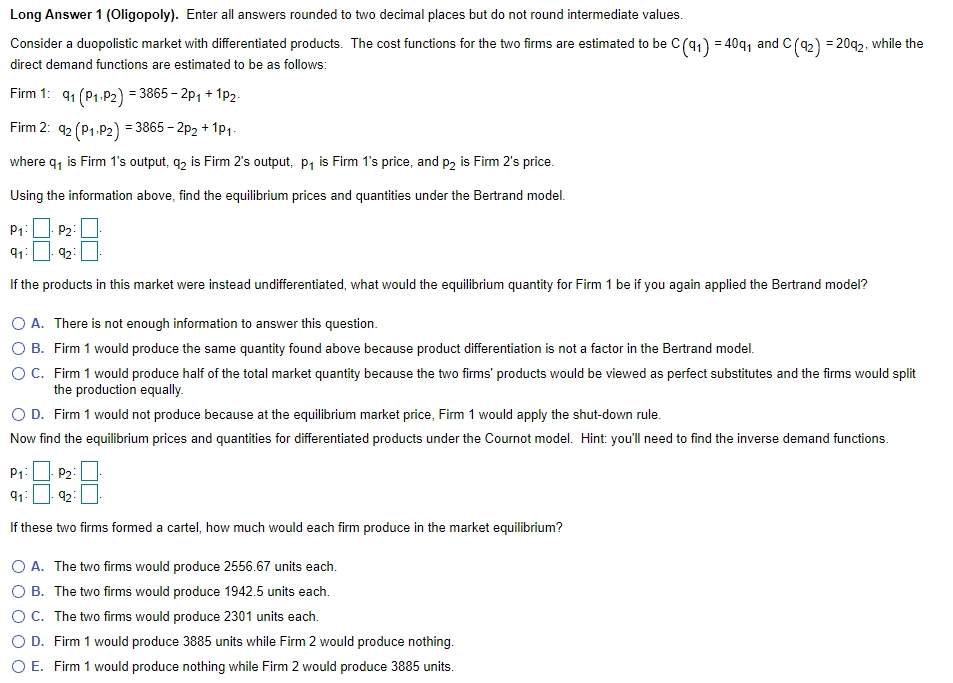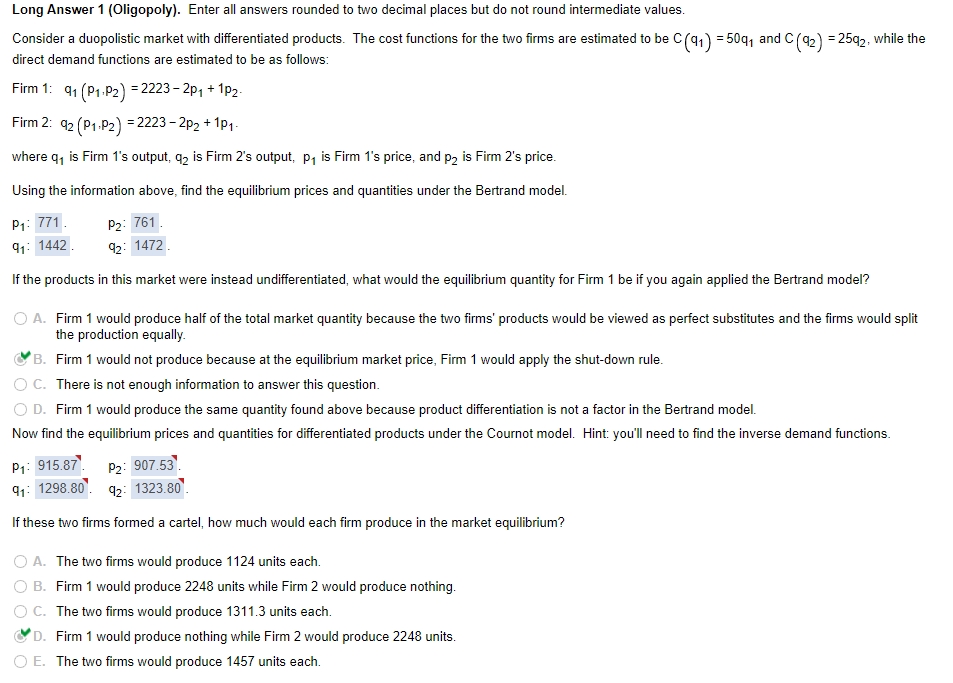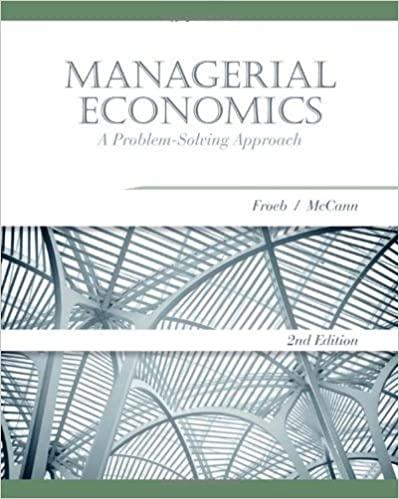Long Answer 1 (Oligopoly). Enter all answers rounded to two decimal places but do not round intermediate values. Consider a duopolistic market with differentiated products. The cost functions for the two firms are estimated to be C (q, ) = 40q, and C (q2 ) =20q2, while the direct demand functions are estimated to be as follows: Firm 1: 91 (P1 .P2 ) = 3865 - 2p1 + 1p2- Firm 2: 92 (P1.P2) = 3865 -2p2 + 1p1- where q, is Firm 1's output, q2 is Firm 2's output, p, is Firm 1's price, and p2 is Firm 2's price. Using the information above, find the equilibrium prices and quantities under the Bertrand model. P1: . P2: 0. 91: . 92:0. If the products in this market were instead undifferentiated, what would the equilibrium quantity for Firm 1 be if you again applied the Bertrand model? O A. There is not enough information to answer this question. O B. Firm 1 would produce the same quantity found above because product differentiation is not a factor in the Bertrand model. O C. Firm 1 would produce half of the total market quantity because the two firms' products would be viewed as perfect substitutes and the firms would split the production equally. O D. Firm 1 would not produce because at the equilibrium market price, Firm 1 would apply the shut-down rule. Now find the equilibrium prices and quantities for differentiated products under the Cournot model. Hint: you'll need to find the inverse demand functions. P1: . P2: 91: 0 92:0 If these two firms formed a cartel, how much would each firm produce in the market equilibrium? O A. The two firms would produce 2556.67 units each. O B. The two firms would produce 1942.5 units each. O C. The two firms would produce 2301 units each O D. Firm 1 would produce 3885 units while Firm 2 would produce nothing. O E. Firm 1 would produce nothing while Firm 2 would produce 3885 units.Long Answer 1 (Oligopoly). Enter all answers rounded to two decimal places but do not round intermediate values. Consider a duopolistic market with differentiated products. The cost functions for the two firms are estimated to be C (q1 ) =50q, and C (q2 ) =25q2, while the direct demand functions are estimated to be as follows: Firm 1: 91 (P1.P2) =2223- 2p, + 1p2- Firm 2: 92 (P1.P2) =2223 -2p2 + 1p1- where q, is Firm 1's output, q2 is Firm 2's output, py is Firm 1's price, and p2 is Firm 2's price. Using the information above, find the equilibrium prices and quantities under the Bertrand model. P1: 771. P2: 761 . 91: 1442 . 92: 1472 If the products in this market were instead undifferentiated, what would the equilibrium quantity for Firm 1 be if you again applied the Bertrand model? O A. Firm 1 would produce half of the total market quantity because the two firms' products would be viewed as perfect substitutes and the firms would split the production equally. B. Firm 1 would not produce because at the equilibrium market price, Firm 1 would apply the shut-down rule. O C. There is not enough information to answer this question. O D. Firm 1 would produce the same quantity found above because product differentiation is not a factor in the Bertrand model. Now find the equilibrium prices and quantities for differentiated products under the Cournot model. Hint: you'll need to find the inverse demand functions. p1: 915.87 . P2: 907.53 . 91: 1298.80 . 92: 1323.80 If these two firms formed a cartel, how much would each firm produce in the market equilibrium? O A. The two firms would produce 1124 units each. O B. Firm 1 would produce 2248 units while Firm 2 would produce nothing. O C. The two firms would produce 1311.3 units each. D. Firm 1 would produce nothing while Firm 2 would produce 2248 units. O E. The two firms would produce 1457 units each








